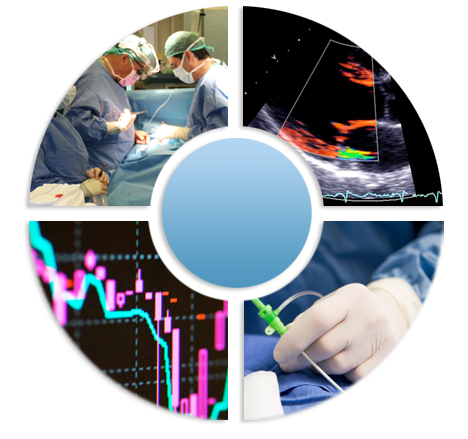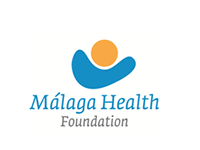Acceso de los editores
Identification of Reference Genes for Quantitative RT-PCR in ascending aortic aneurysms
Publicado por. Dr. Carlos Porras Este artículo pertenece a la categoría Cirugía Cardiaca Con las etiquetas aorta, genes, bicuspid, aneurysm, cardiac surgery, ascending aortic aneurysm, publication, Journal PLos One«Identification of Reference Genes for Quantitative RT-PCR in Ascending Aortic Aneurysms»
Dominic Henn, Doris Bandner-Risch, Hilja Perttunen, Wolfram Schmied, Carlos Porras, Francisco Ceballos, Noela Rodriguez-Losada, Hans-Joachim Schäfers
PLoS One. 2013;8(1):e54132. doi: 10.1371/journal.pone.0054132. Epub 2013 Jan 11.

Hypertension and congenital aortic valve malformations are frequent causes of ascending aortic aneurysms. The molecular mechanisms of aneurysm formation under these circumstances are not well understood. Reference genes for gene activity studies in aortic tissue that are not influenced by aortic valve morphology and its hemodynamic consequences, aortic dilatation, hypertension, or antihypertensive medication are not available so far. This study determines genes in ascending aortic tissue that are independent of these parameters.
Tissue specimens from dilated and undilated ascending aortas were obtained from 60 patients (age ≤70 years) with different morphologies of the aortic valve (tricuspid undilated n = 24, dilated n = 11; bicuspid undilated n = 6, dilated n = 15; unicuspid dilated n = 4). Of the studied individuals, 36 had hypertension, and 31 received ACE inhibitors or AT1 receptor antagonists. The specimens were obtained intraoperatively from the wall of the ascending aorta. We analyzed the expression levels of 32 candidate reference genes by quantitative RT-PCR (RT-qPCR). Differential expression levels were assessed by parametric statistics. The expression analysis of these 32 genes by RT-qPCR showed that EIF2B1, ELF1, and PPIA remained constant in their expression levels in the different specimen groups, thus being insensitive to aortic valve morphology, aortic dilatation, hypertension, and medication with ACE inhibitors or AT1 receptor antagonists. Unlike many other commonly used reference genes, the genes EIF2B1, ELF1, and PPIA are neither confounded by aortic comorbidities nor by antihypertensive medication and therefore are most suitable for gene expression analysis of ascending aortic tissue.
|
|
La fuerza de la unión

En el Instituto Cardiotecnológico aunamos la sabiduría de cuatro áreas clínicas para ofrecer servicios de atención cardiológica de alto nivel.
ICTA: el pulso del equipo
Los más leídos
- ¿Qué esperar tras su operación de corazón? (91988 hits)
- Estoy en tratamiento para la hipertensión arterial. ¿Son fiables los aparatos que miden la presión arterial de forma automática? (63084 hits)
- Aneurismas de aorta ascendente: ¿cuándo hay que operar? (53626 hits)
- Insuficiencia aórtica severa: ¿cuándo hay que operar? (36638 hits)
- Evaluacion de los antiinflamatorios en el riesgo cardiovascular (Diclofenaco, Ibuprofeno y Naproxeno) (33526 hits)
- Me voy a operar del corazón. Preguntas frecuentes (FAQ) (33151 hits)
- ¿Qué debe saber si se va a operar del corazón? (32126 hits)
- ¿El consumo moderado de alcohol es bueno para el corazón? (31161 hits)
- Valvulopatías (enfermedad valvular cardiaca): Generalidades (30476 hits)
- El sexo y las enfermedades cardiacas: ¿es seguro el sexo en pacientes con enfermedades del corazón? (28159 hits)
- Trucos para pacientes en autocontrol de tratamiento anticoagulante con Sintron o Warfarina (24877 hits)
- Tratamiento médico de la insuficiencia aórtica (24415 hits)
Nube de etiquetas
Arritmias
En la Unidad de Arritmias del Área del Corazón atendemos pacientes con trastornos del ritmo cardiaco. Dispone de dos áreas específicas.
Saber másUnidad de Marfan
Equipo multidisciplinar para el diagnóstico, seguimiento y tratamiento de pacientes con síndrome de Marfan.
Cirugía Cardiaca
Los tratamientos de la moderna cirugía cardiaca: cirugía coronaria con y sin circulación extracorpórea, cirugía valvular convencional, etc.
Unidad Válvula Aórtica
Equipo pionero en reparación de la válvula aórtica. Realizamos cirugía de aneurismas de raíz aórtica en quirófano perfectamente equipado.
Saber másCardiología Clínica
Electrocardiograma (ECG), ergometría y ecocardiograma en Benalmádena (Hospital Xanit) y en Fuengirola.
Unidad Muerte Súbita
Detección precoz de las causas de enfermedad coronaria que pueden desembocar en muerte súbita del deportista.
Hemodinámica
Coronariografía, estudio de pacientes con valvulopatía: cardiopatías congénitas del adulto, cateterismo transeptal, etc.
Rehabilitac. Cardiaca
Servicio especializado de rehabilitación integral de pacientes tras angina de pecho, infarto de miocardio, postoperatorio, etc.
Saber más













